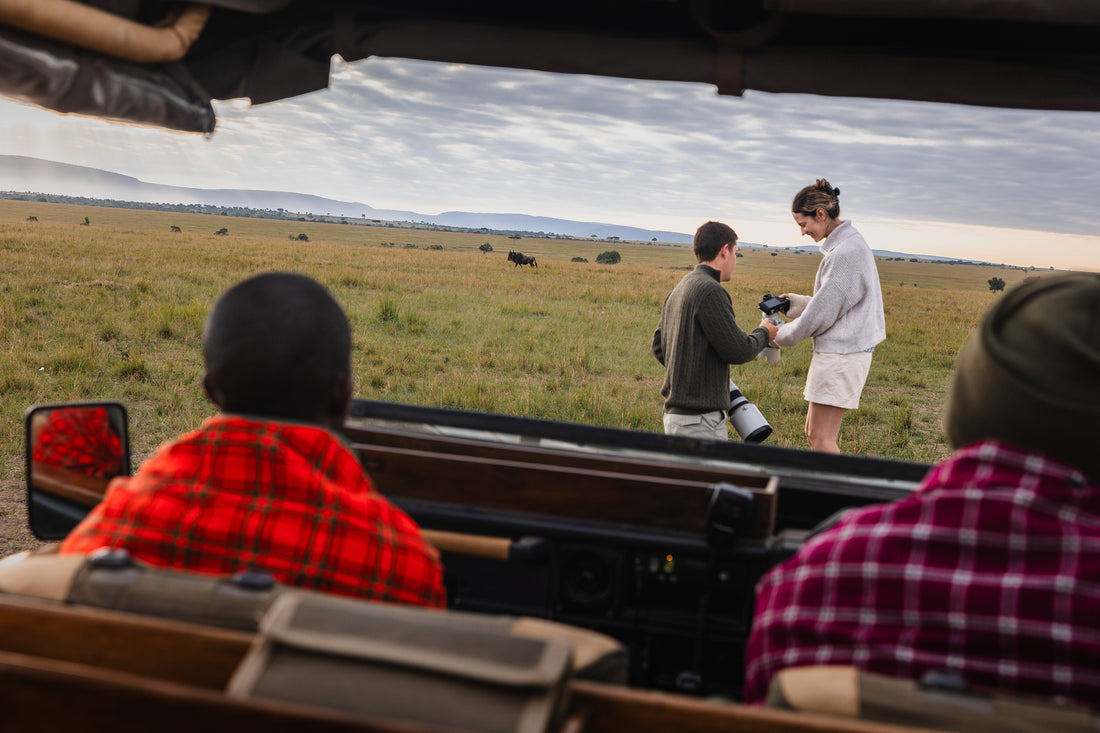Wildlife photography in the African bush offers breathtaking opportunities to connect with nature and document its beauty. However, it’s crucial to approach this endeavor with a sense of responsibility. Whether you’re a seasoned photographer or a novice, prioritizing both safety and ethical practices ensures that you protect yourself, the wildlife, and the environment. Here are some key considerations to keep in mind.
1. Research Your Subject
Before embarking on your wildlife photography adventure, take the time to learn about the animals you hope to photograph. Understand their behavior, habitat, and seasonal patterns. This knowledge not only enhances your chances of capturing stunning images but also helps you recognize when an animal may feel threatened or stressed. For example, some species may have specific breeding or feeding habits that dictate when they are most active. Understanding these patterns will allow you to photograph them in a way that respects their natural rhythms.
2. Maintain a Safe Distance
One of the fundamental rules of wildlife photography is to respect personal space. Many animals can perceive humans as threats, which can lead to dangerous situations. Always maintain a safe distance from wildlife, both for your safety and the animal’s well-being. Use a telephoto lens to capture intimate portraits from afar. If you're in a vehicle, remain inside unless it's safe and legal to exit. Approaching animals too closely can stress them out, disrupt their natural behavior, and potentially provoke aggressive reactions.
3. Choose the Right Time and Place
Timing is crucial in wildlife photography. Early mornings and late afternoons are typically the best times to capture animals in action, as many species are more active during these cooler parts of the day. However, it's equally important to choose locations that are known for ethical tourism practices. Opt for well-established reserves or parks that prioritize conservation and responsible tourism. This not only supports sustainable practices but also ensures that your presence is less likely to disturb the ecosystem.
4. Be Mindful of the Environment
When photographing wildlife, remember that your actions can impact the environment. Stay on designated paths and avoid trampling vegetation or disturbing habitats. Carry out what you bring in—this means packing out all trash and minimizing your ecological footprint. Additionally, be cautious of sensitive areas, such as nesting sites or breeding grounds. Respect signs and guidelines provided by park authorities, as they are designed to protect both wildlife and the environment.
5. Understand Local Regulations and Guidelines
Familiarize yourself with the laws and regulations governing wildlife photography in the area you are visiting. Different regions may have specific rules about interactions with wildlife, and abiding by these regulations is essential. Some areas may restrict off-road driving or have guidelines about drone usage. Understanding these rules not only ensures your safety but also helps in protecting the delicate ecosystems.
6. Practice Patience and Observation
Wildlife photography often requires significant patience. Instead of chasing after animals, take the time to sit quietly and observe. This approach not only leads to better photographs but also reduces stress on the animals. When they sense human presence, they may alter their behavior or retreat. By being patient and allowing wildlife to come to you, you’re more likely to capture authentic moments without causing undue stress.
7. Educate and Advocate
Finally, use your photography as a platform for advocacy. Share your images responsibly and consider writing about your experiences to educate others on the importance of ethical wildlife photography. Highlight the need for conservation and responsible tourism practices. By raising awareness, you contribute to the broader movement of wildlife protection and inspire others to follow in your footsteps.
Wildlife photography in the African bush is an enriching experience, but it comes with significant responsibilities. By prioritizing safety and ethical practices, you can enjoy the thrill of capturing nature while ensuring that the wildlife and environment remain protected for future generations. Your lens can be a powerful tool not only for art but also for advocacy—use it wisely!

